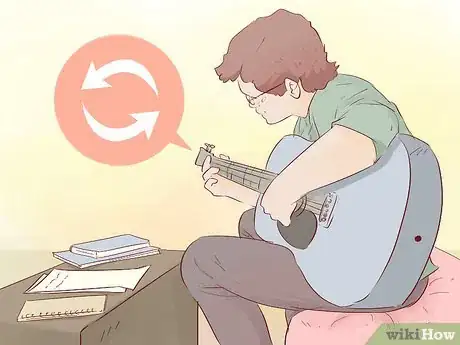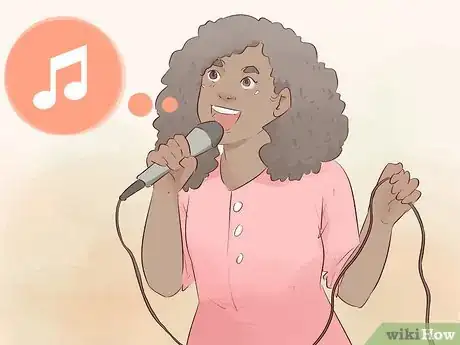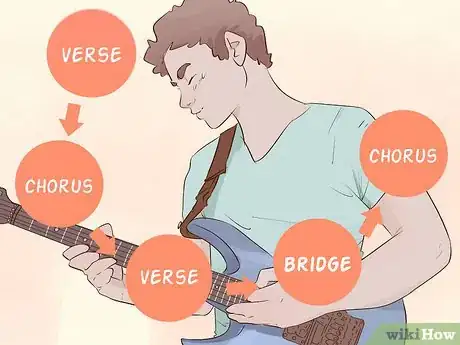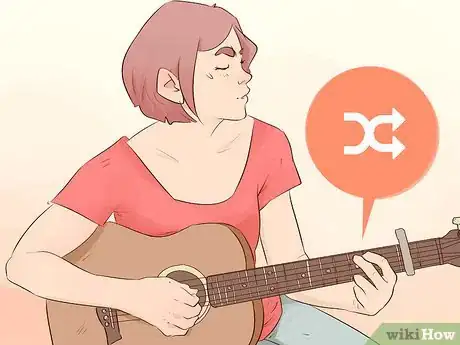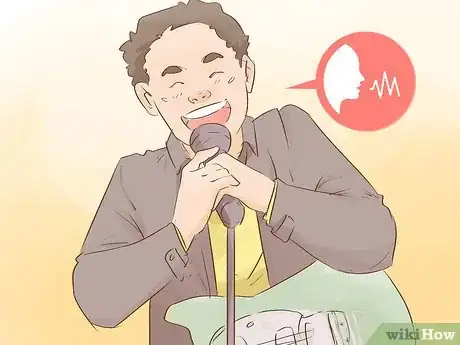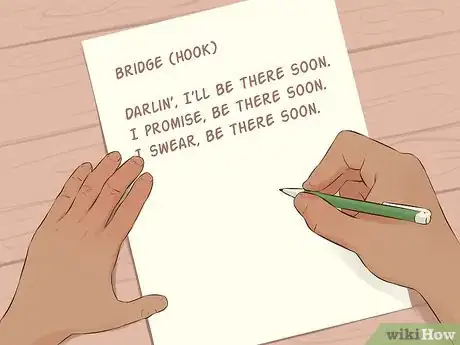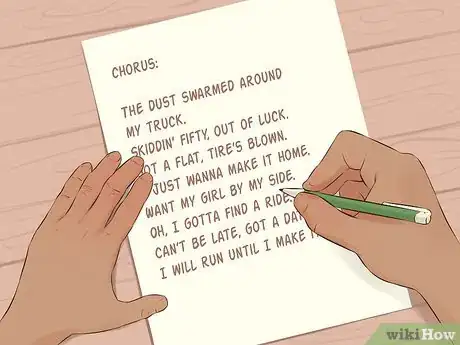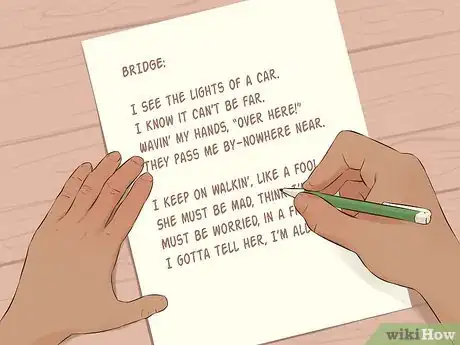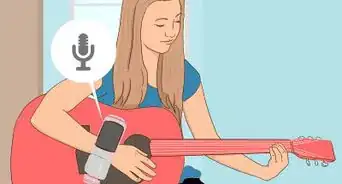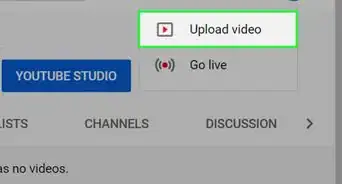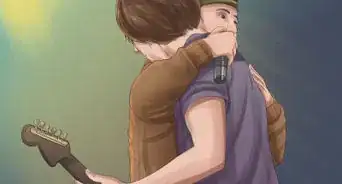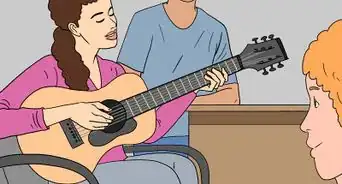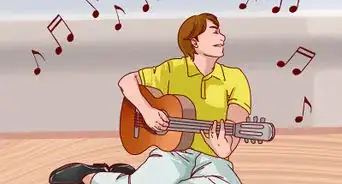This article was co-authored by Tanisha Hall. Tanisha Hall is a Vocal Coach and the Founder and Executive Director of White Hall Arts Academy, Inc. an organization based in Los Angeles, California that offers a multi-level curriculum focused on fundamental skills, technique, composition, theory, artistry, and performance at a conservatory level. Ms. Hall's current and previous students include Galimatias, Sanai Victoria, Ant Clemons, and Paloma Ford. She earned a BA in Music from the Berklee College of Music in 1998 and was a recipient of the Music Business Management Achievement Award.
There are 10 references cited in this article, which can be found at the bottom of the page.
wikiHow marks an article as reader-approved once it receives enough positive feedback. In this case, 85% of readers who voted found the article helpful, earning it our reader-approved status.
This article has been viewed 112,325 times.
A bridge can be a great way to grab the attention of the people listening to your song! Your bridge should add contrast to your song by including musical and lyrical elements that are unique from the rest of your song. The bridge for “Wonderwall” by Oasis, for example, has a slower lyrical rhythm than the rest of the song. Add something new to your song in the music and lyrics, and you’ll have a song that leaves your audience breathless!
Steps
Brainstorming Ideas for Your Bridge
-
1Restate the themes of your song in a new way. In order to restate the themes of your song, first you need to know what they are. They could be love, loss, heartbreak, hardship, rebellion, or any other number of themes. Once you’ve identified your themes, you can write about them in a way that you have done before in the other sections of your song.
- The theme may depend on what genre of song you’re interested in writing.
-
2Mimic bridges from songs in the same genre to which your track belongs. Different musical genres have specific classic features and may use the bridge differently. The bridge in a rock song, for example, might focus on an instrumental solo, a country song might sing a soothing lullaby, or a pop song might sing a bridge in a higher vocal range.
- Once you pick a genre, you can search online to find examples of bridges from famous songs in that genre and information about what bridges in the genre sound like.
Advertisement -
3Put your bridge in different parts of your song. One of the most common structures for popular songs today is Verse/Chorus/Verse/Chorus/Bridge/Chorus, where the bridge is used to break up the monotony of repeating the chorus twice. But, you can feel free to experiment with different structures based on your songwriting needs.[1]
- For example, Coldplay’s song “Fix You” uses the structure Verse/Verse/Chorus/Verse/Bridge/Bridge/Chorus.[2]
- Placing the bridge in different parts of your song can change the emotional impact. If the bridge is near the end, for example, it could help the song end on a high energy note.
- Meanwhile, if the bridge is near the middle, it can help the song get your audience’s energy up and then allow them to cool down as the song progresses.
- Regardless of where the bridge goes, it needs to blend in with the rest of your song. If it’s before the last verse, it should cool down toward a calmer tone.
- If the bridge is before a chorus, you can use it to amp up your audience and create a high energy feel.
Composing the Music for Your Bridge
-
1Change the chord progression during your bridge. A good way to establish the contrast between your bridge and the rest of your song is to change the order in which you play the chords accompanying your lyrics. You can also consider adding in a new chord in the same key.
- The chorus of Roy Orbison’s song “Pretty Woman,” for example, has a chord progression of “D minor/G major/C major/A minor, while the bridge is F sharp minor/D minor/E major.[3]
-
2Change the key during your bridge. A good way to make your bridge stand out is to change keys entirely from the rest of your song. This will heighten the contrast in a major way and really grab your audience’s attention.
- Bryan Adams’ “Summer of ‘69,” for example, changes from the key of D major in the verses and chorus to the key of F major in the bridge.[4]
-
3Sing your bridge in a different vocal range. Play around with singing the lyrics to your bridge an octave higher or lower than the rest of your song. This will add a surprising new layer to your music that your audience will definitely remember because it sticks out so much.[5]
- In the bridge for his song “Grace,” for example, Jeff Buckley sings notes that are considerably higher than in the rest of the song.
- Remember to sing a higher octave with your head voice (you’ll feel the vibration in your cheekbones) and a lower one with your chest voice (you’ll feel the vibrations in your chest).
-
4Feature an instrumental solo in your bridge. If you’re particularly good at playing a specific instrument like the guitar, piano, drums, or saxophone, you can use your bridge to show off a bit. This will also give you a break from singing and the rest of your band (if you have one) from playing.
Writing the Lyrics of Your Bridge
-
1Come up with a hook for your bridge. Just like your chorus, your bridge should have a catchy hook that sticks in your audience’s mind. If you came up with several different hooks while writing your chorus, you can probably use one of the hooks you didn’t use in your chorus to form the foundation of your bridge.
- The hook in the bridge for the Tommy Tutone song “Jenny (867-5309),” for example, is “I got it/I got it/I got your number on the wall.”[8]
- Quick rule of thumb for writing hooks: if a lyrical or melodic phrase sticks in your head and won’t leave, it will probably stick in your audience’s heads too.
-
2Use your lyrics to restate your chorus in a new way. Your bridge should be like a second chorus of sorts. It’s not as specific as your verses, but it deepens the emotional impact of your song. Try to think of lyrics that deal with the themes of your song in a vague, but emotionally raw way.
- The bridge of The Police’s “Every Breath You Take,” for example, describes the author’s emotional state: “I feel so cold and I long for your embrace/I keep crying baby, baby, please.”[9]
-
3Use a different lyrical rhythm for your bridge. Writing a bridge is all about emphasizing contrast. In addition to writing lyrics that restate your themes in a new way, you should consider singing those lyrics in a new rhythm that sets your bridge apart from your verses and chorus.[10]
- In the bridge for his song “Ain’t No Sunshine,” for example, Bill Withers switches from singing to chanting “I know” 26 times.[11]
- The Beatles’ song “A Day in the Life” is particularly effective at changing the rhythm in its bridge (“Woke up/got out of bed”), while also changing the music from a smooth melody to a grating cacophony.
Expert Q&A
-
QuestionWhat is a bridge in a song?
 Tanisha HallTanisha Hall is a Vocal Coach and the Founder and Executive Director of White Hall Arts Academy, Inc. an organization based in Los Angeles, California that offers a multi-level curriculum focused on fundamental skills, technique, composition, theory, artistry, and performance at a conservatory level. Ms. Hall's current and previous students include Galimatias, Sanai Victoria, Ant Clemons, and Paloma Ford. She earned a BA in Music from the Berklee College of Music in 1998 and was a recipient of the Music Business Management Achievement Award.
Tanisha HallTanisha Hall is a Vocal Coach and the Founder and Executive Director of White Hall Arts Academy, Inc. an organization based in Los Angeles, California that offers a multi-level curriculum focused on fundamental skills, technique, composition, theory, artistry, and performance at a conservatory level. Ms. Hall's current and previous students include Galimatias, Sanai Victoria, Ant Clemons, and Paloma Ford. She earned a BA in Music from the Berklee College of Music in 1998 and was a recipient of the Music Business Management Achievement Award.
Vocal Coach The bridge is your opportunity to get creative. For instance, you might switch from a major tone to a minor tone, you could change the beat or instrumentation, add harmonies, and so on. For instance, you might switch from minor to major, change from shakers to a full drum set, or swap your main instrument from guitar to piano. When it comes to lyrics, the bridge should present a question, answer a question, or further emphasize the point of your song. If the main idea of your song is "My love is gone," for instance, the bridge could present the idea, "Maybe being alone is what I need." From a melodic standpoint, the bridge can either echo an idea we've heard before or it can introduce a new idea. One common theme is to use the melody from the pre-chorus as the bridge. You could also use a rising melody and use chords that build intensity to help your final climactic chorus shine!
The bridge is your opportunity to get creative. For instance, you might switch from a major tone to a minor tone, you could change the beat or instrumentation, add harmonies, and so on. For instance, you might switch from minor to major, change from shakers to a full drum set, or swap your main instrument from guitar to piano. When it comes to lyrics, the bridge should present a question, answer a question, or further emphasize the point of your song. If the main idea of your song is "My love is gone," for instance, the bridge could present the idea, "Maybe being alone is what I need." From a melodic standpoint, the bridge can either echo an idea we've heard before or it can introduce a new idea. One common theme is to use the melody from the pre-chorus as the bridge. You could also use a rising melody and use chords that build intensity to help your final climactic chorus shine! -
QuestionIf my song lyrics are too long, how can I shorten them without losing the whole story of my song?
 Community AnswerPresumably you've already thought of getting rid of any repetition and unnecessary information. If your chorus is the same each time, you could consider making them all different, using parts of your story from some of your verses, and then getting rid of those verses. But remember, songs don't have to be short. Rock and metal songs can be quite long, and even folk and hip-hop songs can get up to 10 minutes and beyond! You could also consider telling the same story over two to four songs that are meant to be listened to together (or even expanding it to an entire album).
Community AnswerPresumably you've already thought of getting rid of any repetition and unnecessary information. If your chorus is the same each time, you could consider making them all different, using parts of your story from some of your verses, and then getting rid of those verses. But remember, songs don't have to be short. Rock and metal songs can be quite long, and even folk and hip-hop songs can get up to 10 minutes and beyond! You could also consider telling the same story over two to four songs that are meant to be listened to together (or even expanding it to an entire album). -
QuestionHow should I get my work noticed?
 Community AnswerSocial media is a good way to spread the word. I would recommend posting a few covers, along with some original songs that showcase your range on YouTube.
Community AnswerSocial media is a good way to spread the word. I would recommend posting a few covers, along with some original songs that showcase your range on YouTube.
References
- ↑ http://robinfrederick.com/learn-how-to-write-a-song/
- ↑ https://www.thoughtco.com/the-verse-chorus-bridge-song-form-2456854
- ↑ https://tabs.ultimate-guitar.com/tab/roy_orbison/oh_pretty_woman_chords_1051379
- ↑ https://www.dummies.com/art-center/music/guitar/how-to-change-key-and-progression-on-the-guitar/
- ↑ https://www.secretsofsongwriting.com/2012/07/17/8-tips-for-writing-a-song-bridge/
- ↑ https://spinditty.com/learning/How-to-Write-a-Guitar-Solo
- ↑ https://www.guitarworld.com/lessons/100-greatest-guitar-solos-no-46-hot-teacher-eddie-van-halen
- ↑ https://genius.com/Tommy-tutone-867-5309-jenny-lyrics
- ↑ https://genius.com/The-police-every-breath-you-take-lyrics
About This Article
To write a bridge that grabs your listeners' attention, write something that is musically and lyrically unique from the rest of your song. Try restating the themes of your song in a new way or changing the chord progression to add some contrast. Another way to help your bridge stand out is to change keys entirely from the rest of the song or sing the bridge in a different vocal range. As you work on composing your song, try putting the bridge in different spots to get varied effects. For example, put it in the middle to get your audience’s energy up or near the end to finish on a high energy note. To learn how to come up with a hook for your bridge, keep reading!
